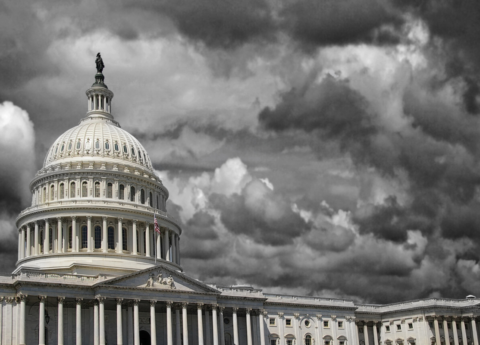Calls to end Kentucky’s defined benefit (DB) public pension plans often refer to the move away from DB plans in the private sector and suggest the public sector should follow suit and become more “modern.” But along with the harm to private employees that has accompanied this trend, industry and government are apples and oranges when it comes to pensions. The decline in private sector plans results from increased regulation as well as economic changes and other differences that do not apply to public sector plans.
Decline hasn’t spread to public sector pensions
It is certainly true there has been a steep decline in the share of private sector workers covered by DB plans over the last few decades. According to one estimate, 88 percent of private workers had a DB plan in 1975 compared to 33 percent in 2005. Another estimate put private sector DB coverage at only 18 percent in 2011.
However, that same decrease has not happened in government. According to the Center for Retirement Research, 98 percent of state and local public employees were covered by a DB plan in 1975 and 92 percent in 2005. Just three states now provide only a 401k-type defined contribution (DC) plan to some of their employees: Alaska, Oklahoma and Michigan.
Rise in regulatory burdens for private sector DB plans drove decline
Growing overregulation of private sector DB plans is a main cause of these diverging paths. During the 1980s, Congress passed three laws that increased the volatility of cost and the administrative burden facing private employers that operate DB plans (another law passed in 2006 added to the strain). Among other changes, the rules required unfunded liabilities to be paid off over 7 years rather than the standard 30 years seen in public DB plans, mandated plans recognize fluctuations in financial markets rapidly rather than the smoothing over time typically used, and unnecessarily raised requirements for the funding levels of plans. Congress also increased the premiums private plans must contribute to a fund that pays benefits when DB plans go under.
These strict regulations made private employers less likely to choose defined benefit plans, but none of the rules apply to plans in the public sector.
Shifts in the private economy and other differences with government also play role
At the same time regulatory burdens were growing for private DB plans, changes to the economy and employer-employee relations accelerated the decline of private pensions. Much of the decrease in private sector DB plans came from the waning of sectors that had higher levels of DB coverage, particularly manufacturing, and the growth of the service sector. That shift corresponded with a decline in unionization, which is associated with higher levels of DB coverage, and the replacement of middle-income jobs with low wage employment providing few benefits. Newer service sector employers were more likely to offer only DC benefits, if they provided any benefits at all.
Other differences between the private and public sector help explain their separate trends. Large employers in the private sector are still much more likely to offer DB plans than small businesses because of the lower administrative costs and higher investment returns from creating a large pool of funds. Governments are also very large employers (and small ones often band together to provide pensions), making it sensible for them to take advantage of the greater efficiencies of DB plans. Private sector businesses also have an uncertain future and lifespan, and are increasingly focused on short-term, even quarterly earnings. Governments are permanent and can therefore invest and manage pension plans for long time horizons.
Contribution patterns are also different in private and public DB plans. Almost all of the contributions in private sector plans come from the employers. Public sector DB plans, in contrast, receive significant contributions from the employees themselves. In fact, for Kentucky’s public DB plans the employee contributes a larger share of the normal costs of the plan than does the employer. That shared responsibility helps sustain public sector plans.
There are also differences between private and public sector workforces. Public sector workers tend to be older, and older workers are more stable and concerned about retirement benefits. Government employees tend to stay in their jobs longer, with some evidence suggesting average tenure has been increasing, not decreasing. That characteristic aligns well with DB plans, which are especially beneficial for career employees. Public employment also has higher rates of unionization and its rate has not declined like the private sector.
Need better retirement for all, not more retirees in poverty
On top of the differences between industry and government, the decline of DB plans in the private sector has come at the cost of retirement security for many workers. In Kentucky, the average 401k account had only $32,499 in 2012, far less than needed to provide a decent standard of living.
We should be talking about new ways to increase the retirement security of all Kentuckians, including those in the private sector overly reliant on 401ks or receiving no benefit at all, and not adding to the problem by worsening the retirement prospects for many thousands of Kentucky public employees.



